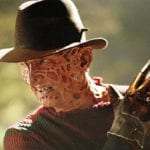 Animals
Animals  Animals
Animals  Weird Stuff
Weird Stuff 10 Weird Things People Used to Do at New Year’s
 Our World
Our World 10 Archaeological Discoveries of 2025 That Refined History
 Weird Stuff
Weird Stuff 10 Fascinating Facts You Might Not Know About Snow
 Miscellaneous
Miscellaneous Top 10 Things Crypto Was Supposed to Change & What Actually Did
 History
History 10 Huge Historical Events That Happened on Christmas Eve
 Music
Music 10 Surprising Origin Stories of Your Favorite Holiday Songs
 History
History 10 Less Than Jolly Events That Occurred on December 25
 Weird Stuff
Weird Stuff 10 Funny Ways That Researchers Overthink Christmas
 Politics
Politics 10 Political Scandals That Sent Crowds Into the Streets
 Animals
Animals 10 Species That Refused to Go Extinct
 Weird Stuff
Weird Stuff 10 Weird Things People Used to Do at New Year’s
 Our World
Our World 10 Archaeological Discoveries of 2025 That Refined History
Who's Behind Listverse?

Jamie Frater
Head Editor
Jamie founded Listverse due to an insatiable desire to share fascinating, obscure, and bizarre facts. He has been a guest speaker on numerous national radio and television stations and is a five time published author.
More About Us Weird Stuff
Weird Stuff 10 Fascinating Facts You Might Not Know About Snow
 Miscellaneous
Miscellaneous Top 10 Things Crypto Was Supposed to Change & What Actually Did
 History
History 10 Huge Historical Events That Happened on Christmas Eve
 Music
Music 10 Surprising Origin Stories of Your Favorite Holiday Songs
 History
History 10 Less Than Jolly Events That Occurred on December 25
 Weird Stuff
Weird Stuff 10 Funny Ways That Researchers Overthink Christmas
 Politics
Politics 10 Political Scandals That Sent Crowds Into the Streets
10 Real Stories That Became Terrifying Horror Films
Horror films are always popular—they’re the perfect combination of scary and harmless. After all, fictional horrors can’t actually hurt anyone and it’s not like movies are real. Even when a film claims to be “based on a true story,” it’s often just a ploy to grab the audience’s attention. But sometimes, just sometimes, horror movies are a little too close to reality. Good luck watching these films again without looking over your shoulder for the real deal.
10Alfred Packer
Ravenous (1999)
Alfred Packer (nicknamed “Alferd” after a misspelled tattoo) is arguably the most infamous cannibal in American history. While journeying to the gold mines of Colorado in 1874, Packer and five other prospectors (Shannon Wilson Bell, James Humphrey, Frank Miller, George Noon, and Israel Swan) decided to push on through the winter rather than wait for spring to clear the trail. The decision turned out to be fatal—for everyone but Packer.
It’s never been clear exactly what happened after the men became trapped in the snowbound Rocky Mountains. In his confession, Packer claimed that Bell had murdered the others before attacking him with a hatchet, leaving Packer no choice but to kill him in self-defense. Others believe that Packer committed all five murders and tried to cast the blame on Bell. We’ll likely never know.
What is known is that Packer survived the winter, eventually making his way to the Los Pinos Indian Agency near Saguache, Colorado. Suspicion fell on him after two Native Americans found strips of human flesh near the Agency, and he was quickly charged with the murder and cannibalism of his fellow travelers. During questioning, Packer admitted that “I threw away the strips I had left, and I confess I did so reluctantly as I had grown fond of human flesh, especially the portion around the breast.”
Antonia Bird’s darkly comedic horror Ravenous was inspired by the case, with the character of Colonel Ives loosely based on Packer himself.
9Joe Ball
Eaten Alive (1977)
In the 1930s, Joe Ball was a former bootlegger and famed ladies man who owned the Sociable Inn in the sleepy town of Elmendorf, Texas. To entertain his guests, Ball built a swampy pond behind the hotel and filled it with five alligators. He would apparently charge guests a hefty fee to watch him feed live kittens and dogs to the gators. In retrospect, that was probably a warning sign, because the Sociable Inn also experienced unusually high staff turnover: Waitresses and barmaids were always vanishing without a trace.
Between 1934 and 1938, local women such as Minnie Gotthardt, Dolores Goodwin, Hazel Brown, and Julia Turner were all reported missing while working for Ball. After a neighbor informed the police that Joe had a barrel behind his sister’s barn that smelled like rotting flesh, deputies visited the Sociable Inn to take him in for questioning. Ball responded by opening the cash register, pulling out a revolver, and shooting himself in the heart. Hotel handyman Clifton Wheeler later led the police to the remains of Hazel Brown, admitting that he had helped Ball bury her. The story soon spread that Ball had also thrown body parts to his alligators, although this remains impossible to prove or disprove.
While there was no physical evidence of Ball’s feeding tactics, his story quickly became infamous and was Tobe Hooper’s inspiration for the character of Judd in his film Eaten Alive, which tells the story of a hotel owner who gets rid of his sweethearts by feeding them to his pet alligator.
8The Finniss River Attack
Black Water (2007)
While the story of Joe Ball might have given you a lifelong fear of alligators, how do you feel about crocodiles? Well, bad news.
On December 21, 2003, Ashley McGough, Shaun Blowers, and Brett Mann were riding ATVs in Australia’s Northern Territory when they decided to wash themselves off in the Finniss River, which was swollen with extra water due to Cyclone Debbie. At some point, Brett Mann lost his footing due to the strong current and was carried downriver as his friends swam after him. Upon reaching Brett, Ashley saw a crocodile and alerted the other two. Ashley and Shaun managed to climb into a nearby tree, but Brett was grabbed by the crocodile and dragged underwater.
A few minutes later, the crocodile resurfaced with Brett’s body in its mouth and waved it in the air. The crocodile then left, only to return five minutes later and pace at the base of the tree, trapping Shaun and Ashley. It remained there all evening and morning, until a rescue helicopter arrived looking for the trio. Ashley and Shaun spent 22 hours trapped in the tree. The body of Brett Mann was never found.
David Nerlich and Andrew Traucki’s Black Water is loosely based on the attack, telling the story of three friends taking a river tour in Northern Australia, who attempt to survive in a tree after a crocodile attacks their boat and kills their tour guide. The crocodiles in the movie were real, filmed by the directors in safer conditions and then added in digitally.
7Travis Walton
Fire In The Sky (1993)
Have you ever seen something you couldn’t explain? Meet Travis Walton, who claims he was abducted by aliens on November 5, 1975. That evening, Travis and his logging coworkers were driving home from work when they claim to have seen a UFO hovering over the Apache-Sitgreaves National Forest in Springerville, Arizona. According to Travis, he was trying to get a closer look at the UFO when he was suddenly hit with a blue-green beam of electrical light and was knocked unconscious. His buddies fled the scene, only to return to find Travis missing and no trace of anything in the sky.
From there, Travis supposedly fought off humanoid extraterrestrials and was returned to Earth in Heber, Arizona after a five-day disappearance. Travis’s story attracted widespread attention and he was put through at least 12 lie detector tests regarding the events of his alleged alien abduction. The first test, which was conducted right after he was found, concluded that he was being deceptive. He passed the others. His six co-workers all passed similar lie detector tests. The film Fire In The Sky is based on the memoir Travis wrote about his experiences, although it naturally adds some typical Hollywood embellishments.
6Adolfo Constanzo
Borderland (2006)
Adolfo Constanzo was a real-life practitioner of black magic, specifically his own personal variant of Palo Mayombe, an Afro-Caribbean religion that includes the ritual sacrifice of animals. It did not include human sacrifice until Constanzo decided to modify the religion for his own ends.
As the leader of a cult and a drug cartel, Constanzo orchestrated the ritual murders of 23 people in Matamoros, Mexico, between 1988 and 1989. The victims’ organs would be harvested for Constanzo’s nganga (a type of iron cauldron) and used to work spells to protect his gang from enemies and ensure their business flourished. His lover and follower Sara Aldrete Villareal said she felt compelled to obey him “through the sheer force of his personality.” The cult’s calling card was turning the spines of their victims into necklaces. Constanzo committed suicide after he was cornered in a manhunt sparked by his cult’s murder of an American college student, Mark Kilroy.
The 2007 film Borderland is loosely based on Constanzo’s murderous religion, following the unfortunate weekend of three Texas college students who get abducted and prepped for sacrifice by a Mexican cult.
5Father Gary Thomas
The Rite (2011)
In recent years, the Catholic Church in America has seen a dramatic upsurge in requests for exorcisms, with Washington’s Pew Research Center reporting that “40 percent of Americans said they completely believe angels and demons are active in the world, with 28 percent telling us they mostly believe this.” And priests like Father Gary Thomas have risen to the challenge.
Thomas became a certified exorcist after taking a course at the Vatican’s Athenaeum Pontificium Regina Apostolorum in Rome, where he apprenticed with Rome’s leading exorcist, Father Carmine De Filippis. In exorcisms he has performed or witnessed, he reports having seen a patient’s head “move in very rigid ways,” “epileptic-like seizures,” and “serpentine” body movements. Thomas’s exorcism training was was the basis for the nonfiction book The Rite: The Making of a Modern Exorcist by journalist Matt Baglio, which would in turn inspire Mikael Hafstrom’s film of the same name.
The Rite tells the story of Father Michael Kovak (based on Thomas), a seminary student taught the ways of exorcism by Lucas Trevant (based on Father Carmine). Thomas, who called the film the most real exorcism movie made to date, acted as a consultant. During his week on set, he was apparently approached by several actors worried they might be “opening doorways to the demonic by making the film.” Luckily, Father Thomas was able to reassure them with a comforting word: “Possibly.”
4Wade Davis
The Serpent And The Rainbow (1988)
Thanks to the success of films like World War Z, the zombie genre is more popular than ever. But who would have thought that one of the first zombie films was supposedly based on a true story?
Wade Davis was an American anthropologist who traveled to Haiti after hearing a story that seemed too crazy to be true. In 1962, a Haitian man named Clairvius Narcisse died and was buried by his family, only to mysteriously return to his village in 1980. Narcisse explained that a voodoo sorcerer had used “zombie powder” to put him into a death-like sleep before reviving him and forcing him to work on a plantation. When the sorcerer and the plantation owner died, Clairvius simply went home.
Intrigued by the story, Davis tried to learn more about the powder, which he discovered was a mix of tetrodotoxin and bufotenin, toxins taken from certain types of puffer fish and frogs. After awakening, the victim is given a paste made from datura seeds, which induces a “zombie-like” state of amnesia and suggestibility. Davis wrote the book The Serpent and the Rainbow about his experiences in Haiti, which was later adapted into a film of the same name by legendary horror director Wes Craven.
3The Texas Slave Ranch
Hoboken Hollow (2006)
In the early 1980s, Walter Wesley Ellebracht ran a successful ranch in the hills outside of San Antonio, Texas. With the help of his son, Walter Jr., and foreman Carlton Robert Caldwell, Ellebracht also manufactured and sold carved wooden keychains to passers-by. To make the keychains and staff the ranch, the Ellebrachts would lure hitchhikers and drifters with the promise of food and a place to stay, before forcing them into slavery. Over the course of four years, as many as 75 vagrants were brought to the isolated ranch, where they were disciplined with cattle prods for misbehavior such as disrespecting a family member or failing to obey orders.
One particular worker, Anthony Bates, a one-eyed drifter picked up by the Ellebrachts in the early months of 1984, was injured by a chainsaw he was operating. Unable to work, Bates became a punching bag for the Ellebrachts and the other slaves. Among other things, he was often tied to a tree and shocked with a cattle prod on the genitals, tongue, and missing eye socket. Incapable of withstanding sustained torture, Bates died in February 1984. His body was burned on an open fire by Caldwell.
In March 1983, the “Texas Slave Ranch” was raided by the police after an anonymous tip from Travis Boyd, a former slave who had been released by the Ellebrachts. In 2006, the story inspired the indie horror Hoboken Hollow.
2Chante Mallard And Gregory Biggs
Stuck (2007)
Hit-and-run cases do not get odder than this.
On October 25, 2001, a nurse’s aide named Chante Mallard spent the evening drinking, taking drugs, and partying in Fort Worth, Texas. At 3:00 AM, Mallard decided to leave her friend’s apartment and drive home. That decision changed her life and ended another.
Gregory Biggs, a local homeless man, was walking across a six-lane highway when Mallard slammed into him with her car, causing Biggs to become lodged in her windshield. Mallard attempted to remove him, but after struggling for a few minutes, decided to continue driving home, where she parked her car in her garage, leaving Biggs in the windshield.
Chante reportedly returned to check on Biggs throughout the night, repeatedly apologizing for what had happened, but did not attempt to save his life or contact the authorities. Biggs eventually bled to death in the windshield and Chante had her ex-boyfriend Clete Jackson and his cousin Herbert Cleveland dump the body in a nearby park, where it was found on October 27. Chante was arrested almost four months later, after an informant tipped off the police that she had discussed the incident at a party. She was sentenced to 50 years in jail for murder after it was determined that Biggs could have survived with prompt medical attention.
The horrifying story was adapted into two films: Stuck and Hit And Run.
1John Justin Bunting
Snowtown (2011)
John Justin Bunting gained a following after moving to Salisbury North, a low-income suburb of Adelaide, Australia. He and his followers, Robert Joe Wagner, Mark Haydon, and James Vlassakis, tortured and murdered at least 11 townspeople. Eight of the bodies were placed in barrels and hidden in an abandoned bank vault in nearby Snowtown, causing the crimes to be nicknamed “the Bodies-in-Barrels Murders.” Bunting justified the killings by claiming he was ridding society of pedophiles, homosexuals, “weak” people, and anyone else he took a disliking to.
Bunting and Wagner killed their first victim, a mentally disabled man named Ray Davies, after Bunting decided he was a pedophile. Davies was tortured before being strangled to death. The tortures grew more elaborate as the number of victims grew, with some being held for up to two days before Bunting killed them.
After Bunting and Wagner killed Mark Haydon’s wife, Elizabeth, police began to actively investigate the gang. Bunting and his followers actually committed their last murder in the vault while under police surveillance. When the authorities entered the vault they found the barrels, handcuffs, knives, a bloodstained saw, a shotgun, and a device used to administer electric shocks. Vlassakis became the key witness against his comrades after making a plea bargain.
The 2011 film Snowtown (later renamed The Snowtown Murders) presents the killings from Vlassakis’s point of view.
David and Roxanne enjoy watching movies, exploring, traveling, and reading.








